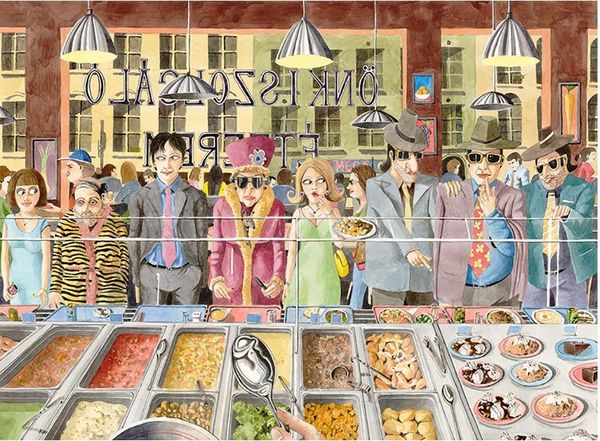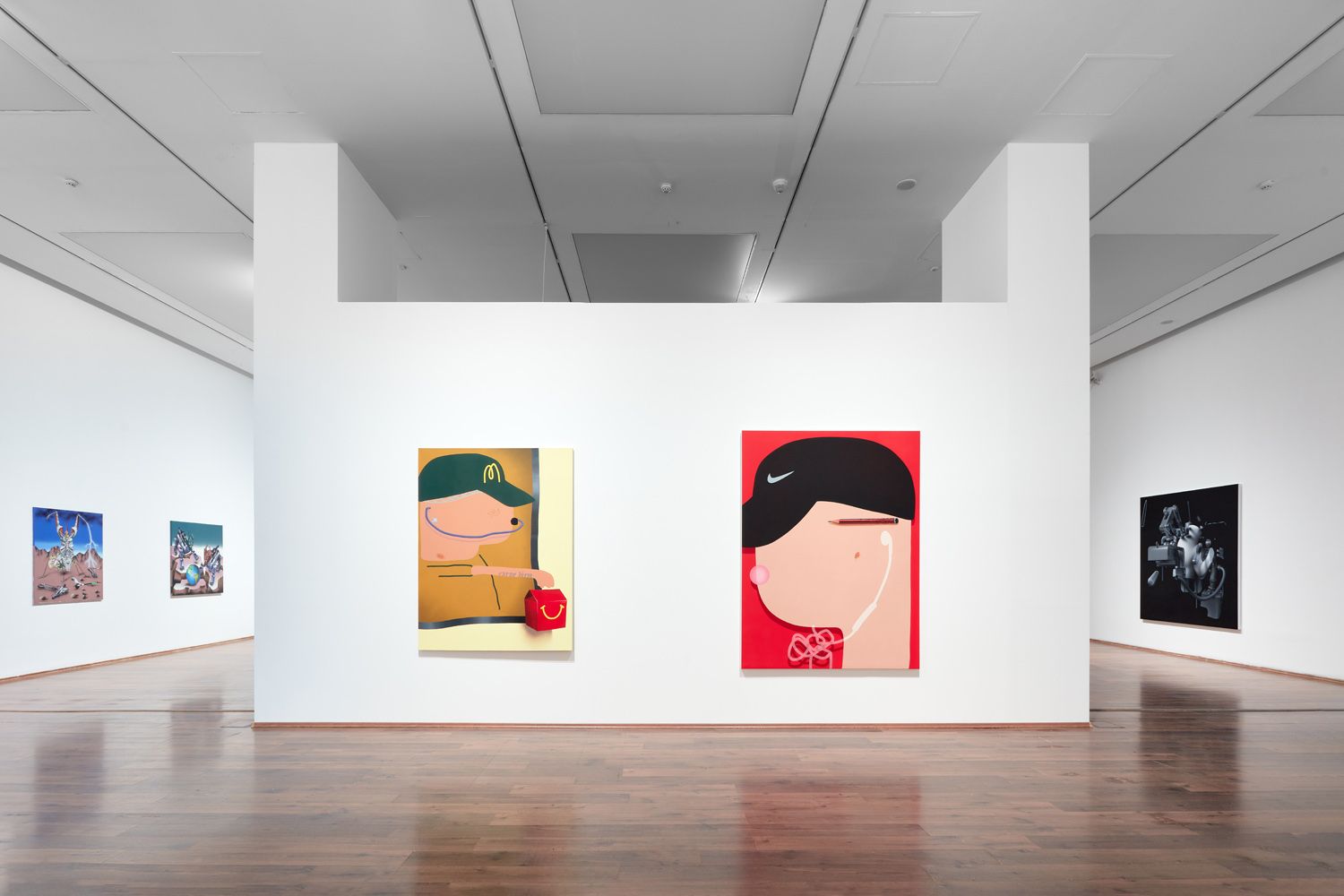The New Mediations exhibition at MODEM Center for Modern and Contemporary Art in Debrecen, Hungary, explores the impact of the internet on art through the works of thirteen international Gen-Y artists. The show highlights cross-cultural influence and the overlap between digital and analogue art forms.
Author: Vanessa Murrell
Curator Török Krisztián Gábor notes, “The artworks have been shaped by the internet, not only as a medium, but also through their circulation and consumption.” Groupings of singular artistic practices offer a similar sense of discovery to scrolling through the artists’ Instagram profiles.
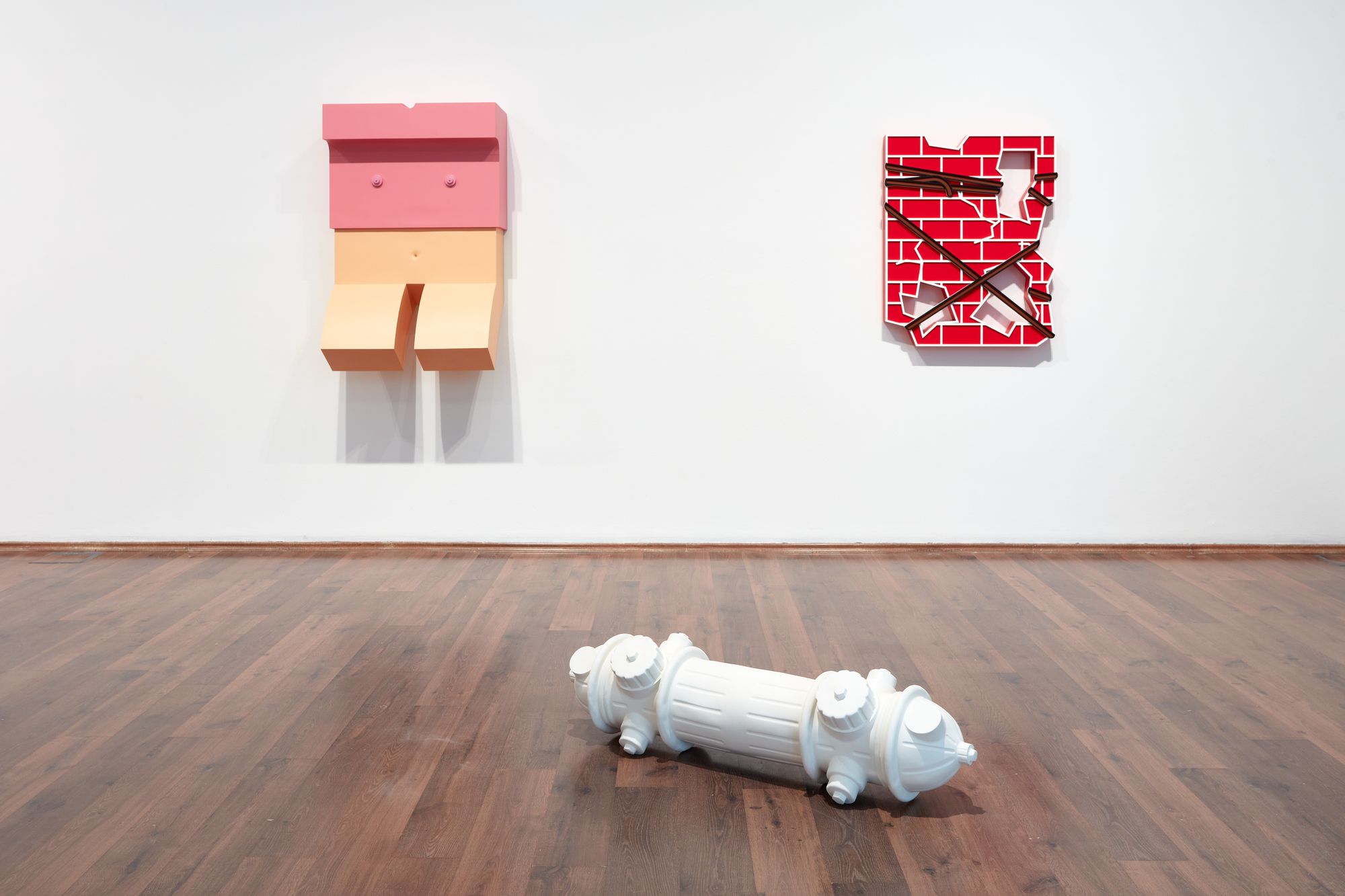
At the entrance, Liam Fallon’s sculptures convey the queer experience of not belonging through his manipulation of everyday urban objects in a dysfunctional manner. Across them, Christian Holze’s new works examine the commodification of classical imagery. He digitally recreates painterly forms of renowned pieces like The Farnese Bull and Medusa, detaching them from their original contexts. This theme of reinterpretation continues with Hanna Sophie Dunkelberg’s work, reflecting a Berlin-based industrial aesthetic on art historical subject matter. Its inlayers of pins, tape, and scratchings play with negative space and texture.
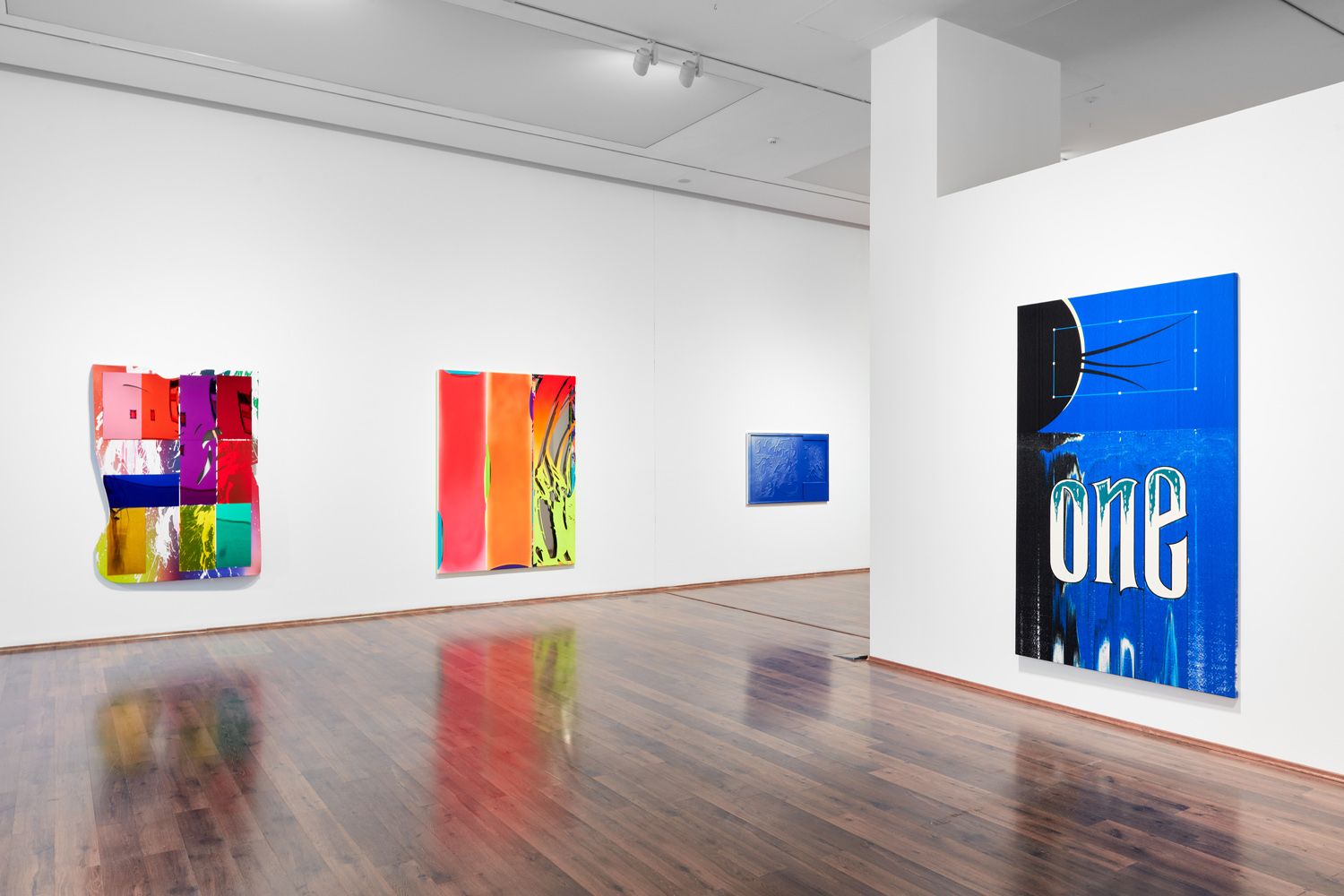
Likewise, Tim Freiwald and Márton Nemes use a multi-layered approach by combining technological and traditional techniques in their works. By using the term ’nitrate’ as a conservator and the word ’shuffle’ as a movement, Freiwald explores preservation and change in Nitrite Shuffle I(2021). Nemes’s High All The Time 05 (2018) combines laser cutting with air spraying, and reveals the painting’s stretcher bars, alluding to the past while pushing the medium of painting forward. Heart Break Painting 03 (2022) illustrates his ability to manipulate perception by radiating neon colors into the environment, blurring the lines between painting and setting.
Opposite each other, the works of Róbert Batykó and Arno Beck use technology as a tool in painting. Both employ labor-intensive techniques that remove control from their hands. Batykó operates a paint scraping machine to create glitched and ghostly effects on canvas. Beck, meanwhile, uses CNC machines and an aquarelle ballpoint pen to produce pixelated forms reminiscent of the 80s and 90s.

In Oli Epp’s Love Song (2019) self-portrait, the artist delivers a satirical commentary on the human condition. By depicting himself without mouth, eyes, and ears, yet still engaging in consumerist activities such as chewing gum and listening to music, the artist creates an eerie sense of anxiety. The semiotics of the character are represented by products like earpods and caps, highlighting their role in shaping identity. Epp notes, “The subjects here live in our current age—the blank, 2D beings are largely relatable—both everyone and no one, the consumer and worker”. In his Carpe Diem (2017) painting, he depicts a drive-through counter attendant handing a fast food order. The worker has a ’carpe diem’ tattoo on his arm, highlighting the disconnection between his actions and the ideals he espouses.
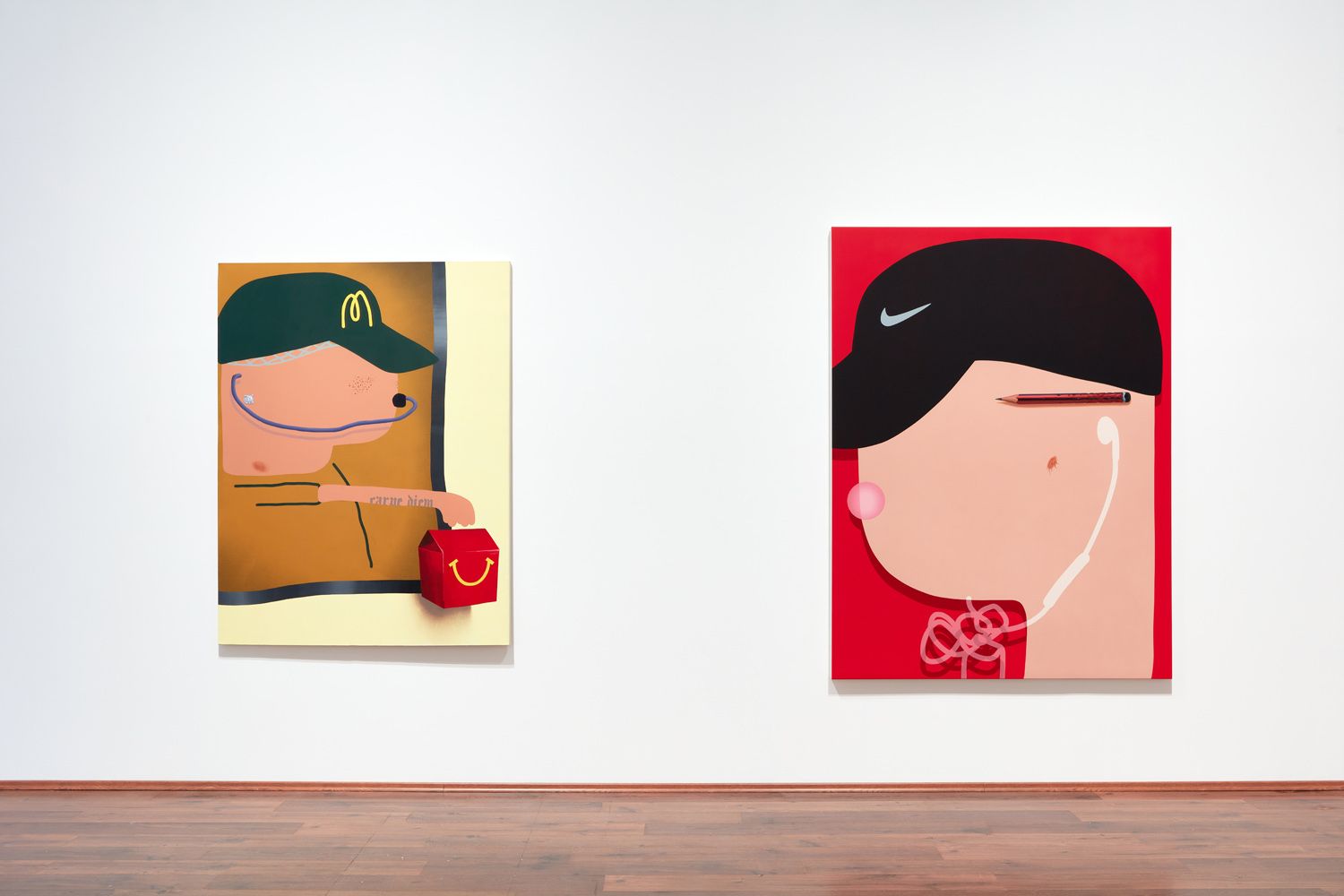
Epp’s work is complemented by Maja Djordjevic’s painting LIFE (2021), depicting 21st century life. The predominantly white canvas shows a woman leading a seemingly idyllic life, with sunshine and greenery, but it is disrupted by a tornado as she exercises. Visitors often smiled at the work, despite its sober, almost dystopian, narrative. With a cruciform gesture, the figure symbolizes Jesus’ crucifixion and poses the question, “Is this truly life?”
Birds of Cool is a collective of five young Hungarian artists. In the former association for birds and pigeons, their studio, named Birdhouse, is also their work’s title. In their installation (2022) a network of paintings resemble computer screens with several tabs open. These depict cutting-edge technology including plotter machines and airbrushes as the new pencils of the digital age. This piece offers a surprising counterpoint to the exhibition by displaying the very same tools used across the exhibition, inviting viewers to explore the underlying meaning of their own and others’ creations.
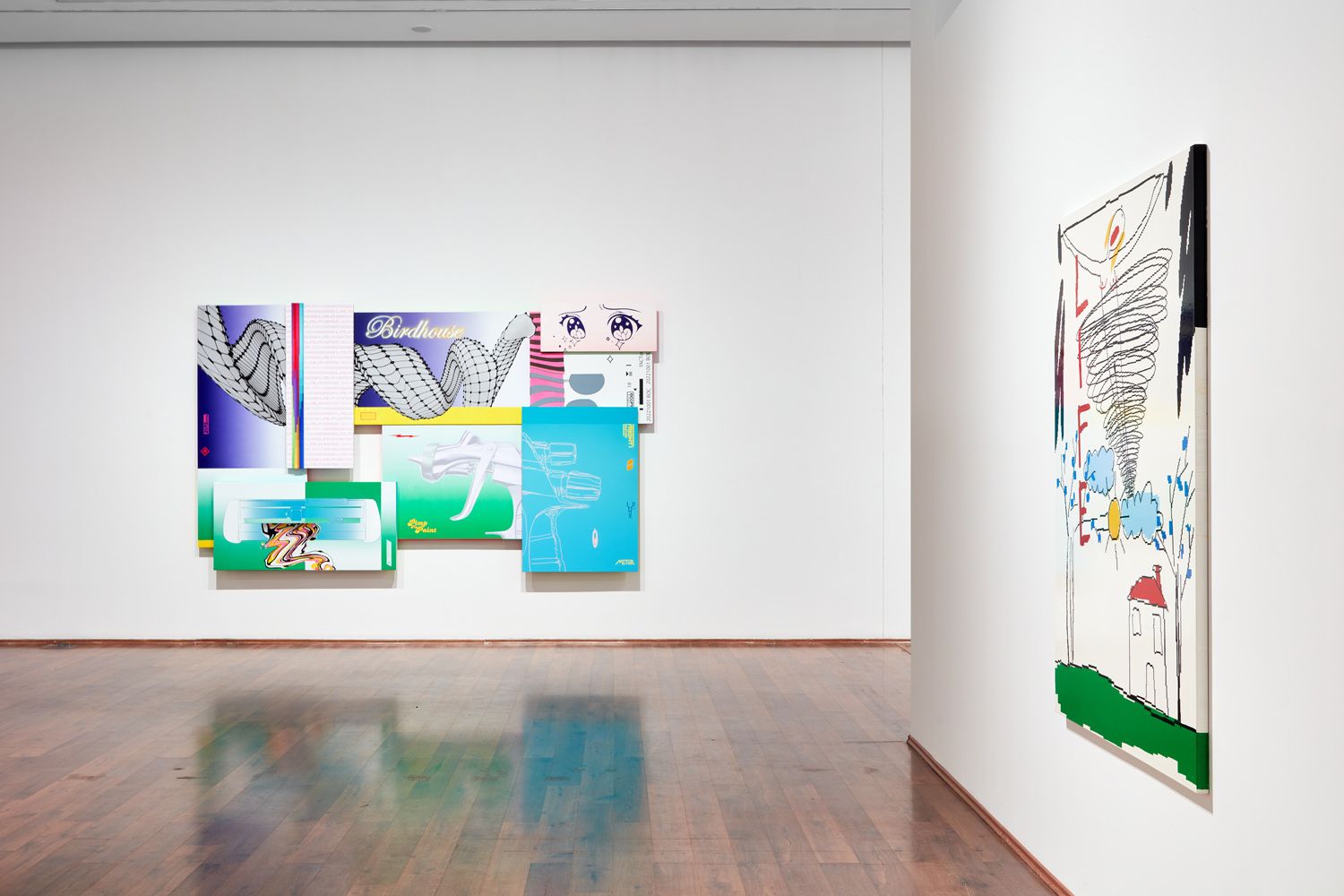
The group, with a background in graffiti, sees themselves as a tuning studio, reflected in their integration of a cheeky Pimp My Paint slogan. Their work also includes taglines, logos, and barcodes that present them as both creators and products. A black and white illustration resembling a serpent-DNA refers to how solo graffiti tags are colorful, while crew tags are monochromatic. “It symbolizes our shared consciousness within the creative process”, according to the group. This work also features sparkly anime eyes, illustrating the artists’ awareness of the images they consume.
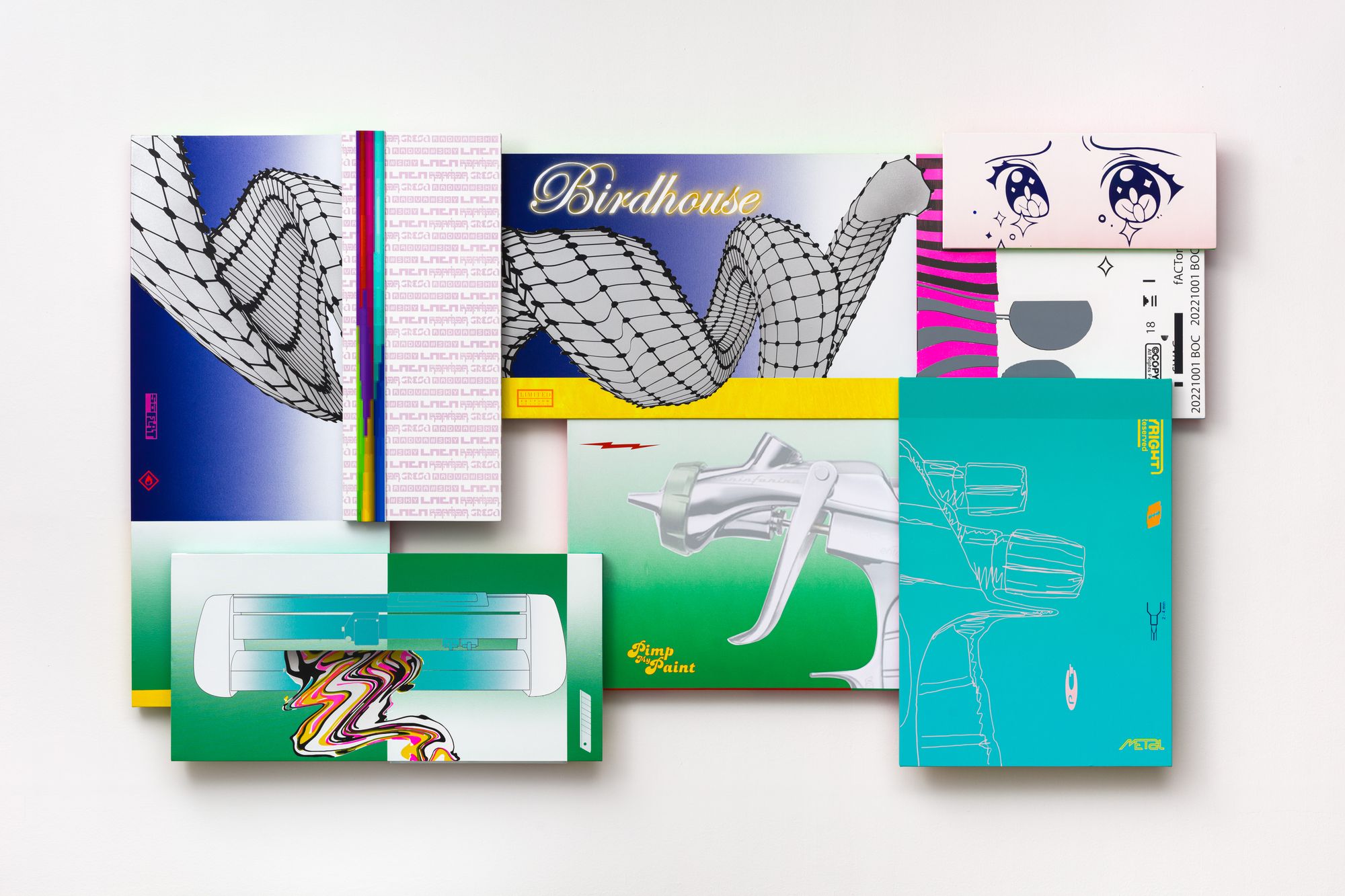
Throughout, the works become increasingly two-dimensional and the atmosphere darker. In the closing space, works by Botond Keresztesi, Aaron Scheer and Harrison Pearce deal with technological advances. Keresztesi’s paintings feature post-humanistic scenes where AI poses a threat, Scheer uses glitches to convey the humanity of machines, and Pearce features an unrealized mechanical creation.
In spite of the many somber themes, visitors often smiled, a testament to the power of aesthetics. The New School’s Assistant Professor of Media Studies, Kate Eichhorn suggests that obsession with reputation management may hinder innovation. However, the exhibition showcases a generation of artists who have solidified their visual identity early on and continue to define the visual language of the new age.

New Mediations was on view at MODEM, Debrecen until 22 January 2023.
Photos: Dávid Biró

Hard to find national consensus about historical narratives—interview on the Post Soviet heritage

Artistic fragility at the front line | Sofika Ceramics
